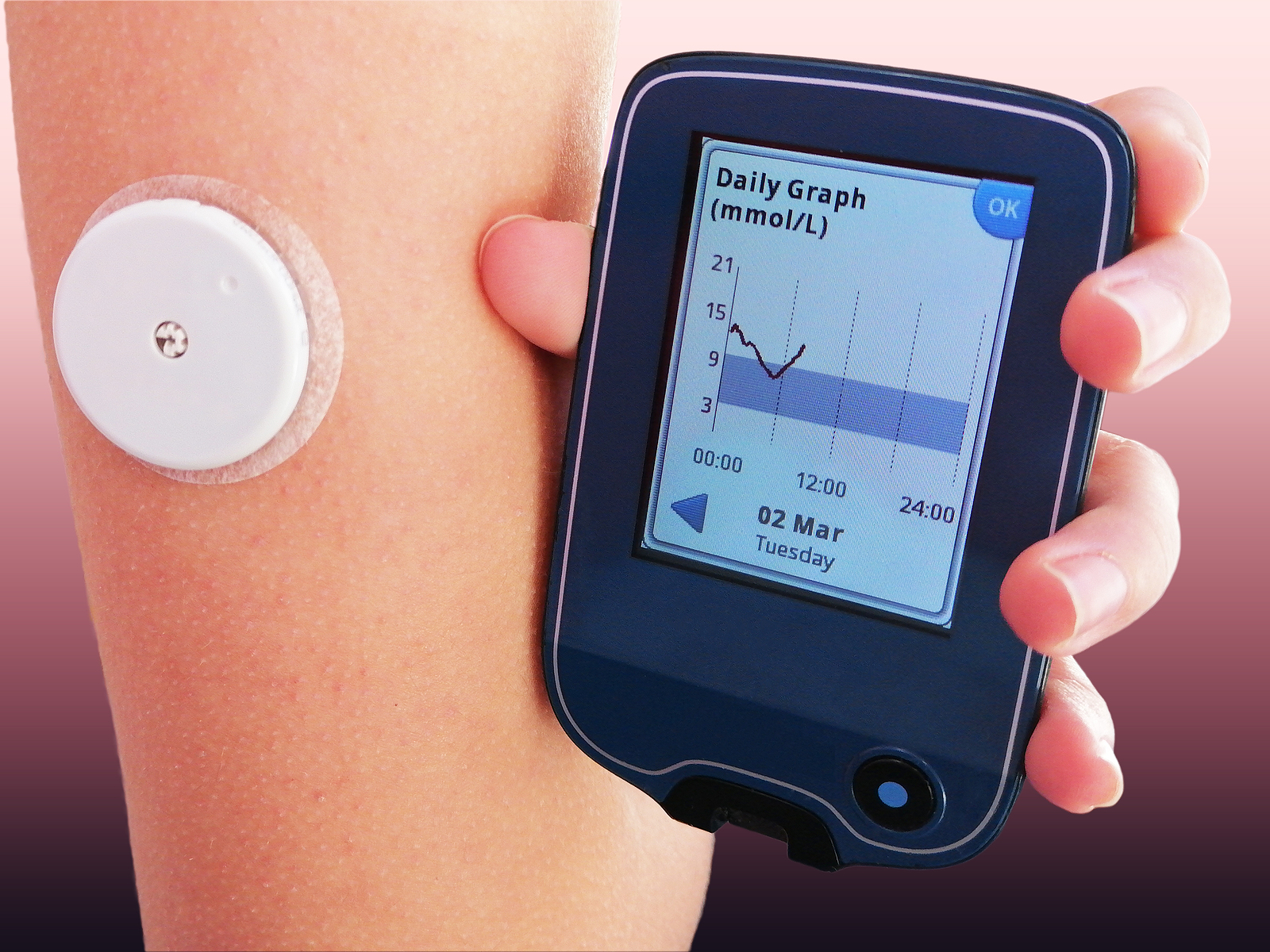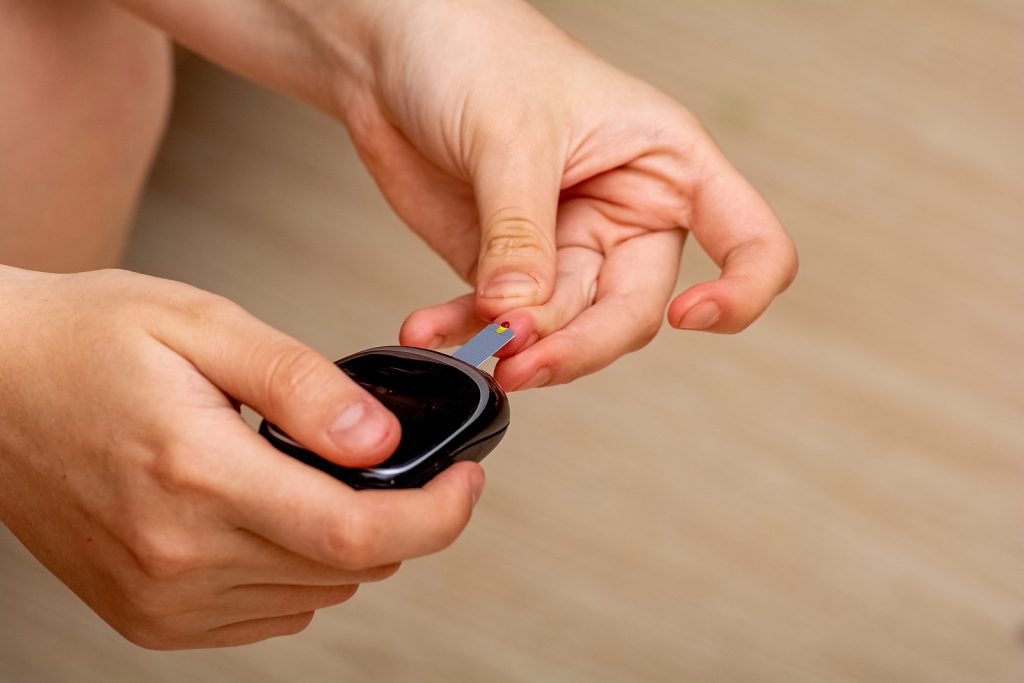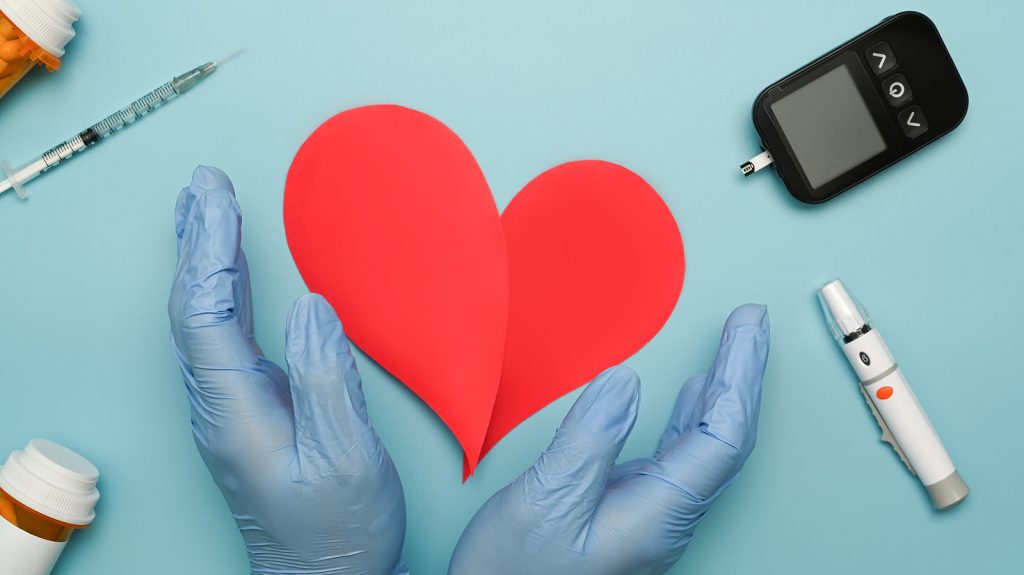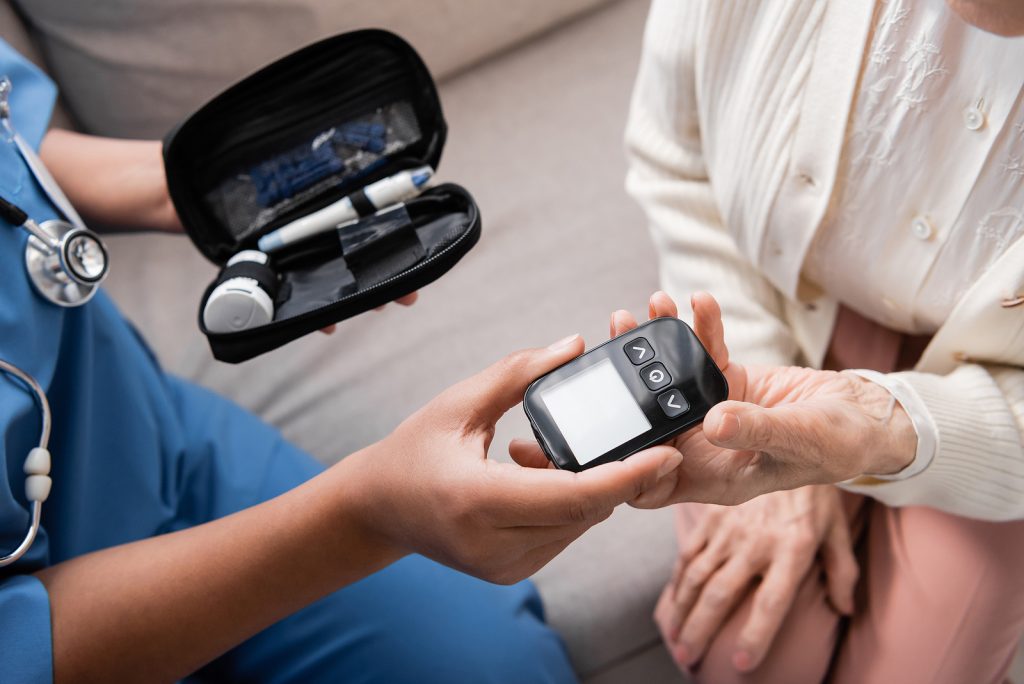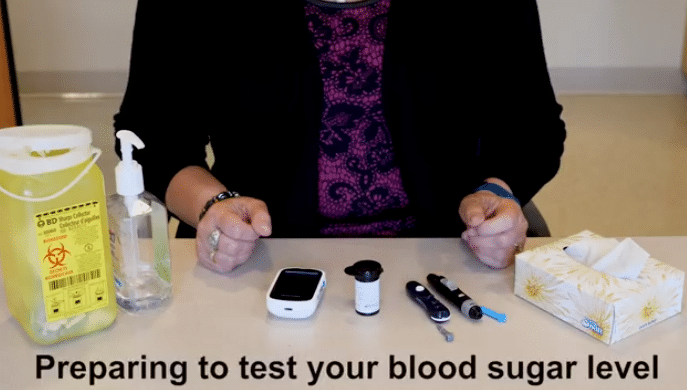A Complete Buyer’s Guide for Blood Glucose Meter
When it comes to managing diabetes, monitoring blood glucose levels is essential. Blood glucose monitors allow individuals to track their blood sugar levels throughout the day and make necessary adjustments to their diet and medication. With so many different types of blood glucose monitors on the market, it can be overwhelming to choose the best one for your needs. In this article, we will explore the key factors to consider when choosing a blood glucose monitor that is right for you.
Understanding Blood Glucose Monitors Before diving into the key features and personal factors to consider when choosing a blood glucose monitor, it’s important to understand the basics of how they work. Blood glucose monitors measure the amount of glucose in a small sample of blood, typically taken from the fingertip. This measurement is then displayed on a screen, allowing individuals to track their blood sugar levels over time. Some blood glucose monitors require coding, while others do not. It’s important to understand the differences between these types of monitors before making a purchase.
Key Features to Consider When choosing a blood glucose monitor, there are several key features to consider. These include accuracy, ease of use, size, and cost. Accuracy is important to ensure that the readings are reliable and consistent. Ease of use is important for individuals who may have difficulty using small devices or those with poor eyesight. Size is important for individuals who need to carry their monitor with them throughout the day. Finally, cost is an important consideration for many individuals, as some monitors can be quite expensive.
Key Takeaways
- Understanding how blood glucose monitors work is essential before choosing the right one for your needs.
- Key features to consider include accuracy, ease of use, size, and cost.
- Consulting healthcare professionals and reviewing product reviews can also be helpful in making a final decision.
Understanding Blood Glucose Monitors
What is a Blood Glucose Monitor
A blood glucose monitor is a medical device that measures the level of glucose in a person’s blood. It is commonly used by people with diabetes to monitor their blood sugar levels. The device works by using a small drop of blood, usually taken from the fingertip, which is placed on a test strip. The strip is then inserted into the monitor, which analyzes the blood and displays the glucose level on a screen.
Types of Blood Glucose Monitors
There are several types of blood glucose monitors available on the market. The most common types are:
-
Self-Monitoring Blood Glucose (SMBG) Monitors: These are the most common type of blood glucose monitors. They are small, portable devices that allow people with diabetes to monitor their blood sugar levels at home or on-the-go. They require a small drop of blood and provide results within seconds.
-
Continuous Glucose Monitoring (CGM) Systems: These are more advanced blood glucose monitors that provide continuous glucose readings throughout the day and night. They consist of a small sensor that is placed under the skin and a transmitter that sends the glucose readings to a receiver or smartphone app.
-
Flash Glucose Monitoring (FGM) Systems: These are similar to CGM systems but do not require a transmitter. Instead, the sensor is scanned with a reader or smartphone app to obtain glucose readings.
It is important to choose a blood glucose monitor that meets individual needs and preferences. Factors to consider include cost, accuracy, ease of use, and features such as data storage and connectivity. It is also important to consult with a healthcare provider before choosing a blood glucose monitor.
Key Features to Consider
When choosing a blood glucose monitor, there are several key features to consider. These include accuracy, ease of use, and data management.
Accuracy
Accuracy is perhaps the most important feature to consider when selecting a blood glucose monitor. The monitor should be able to provide accurate readings consistently. Look for a monitor that has been approved by regulatory agencies such as the FDA or CE. Additionally, consider the following factors when evaluating accuracy:
- Calibration: Some monitors require manual calibration, while others are self-calibrating. Self-calibrating monitors may be more convenient, but manual calibration may result in more accurate readings.
- Sample size: Some monitors require a smaller blood sample size than others. Generally, smaller sample sizes are more convenient, but larger sample sizes may provide more accurate readings.
- Test strip expiration: Expired test strips can result in inaccurate readings. Make sure to check the expiration date on test strips before using them.
Ease of Use
The ease of use of a blood glucose monitor can greatly impact how often it is used. Look for a monitor that is easy to use and requires minimal steps to obtain a reading. Consider the following factors when evaluating ease of use:
- Display: The display should be easy to read and understand. Some monitors have backlit displays, which can be useful in low-light situations.
- Buttons: The buttons should be easy to press and clearly labeled.
- Test strips: Test strips should be easy to insert and remove from the monitor.
Data Management
Data management features can be useful for tracking blood glucose levels over time. Look for a monitor that has the following data management features:
- Memory: The monitor should be able to store multiple readings over time.
- Connectivity: Some monitors can connect to a computer or smartphone app, allowing for easy tracking and sharing of data.
- Averages: The monitor should be able to calculate and display averages of blood glucose readings over time.
Overall, when selecting a blood glucose monitor, it is important to consider accuracy, ease of use, and data management features. By evaluating these factors, you can select a monitor that fits your needs and helps you manage your diabetes effectively.
Personal Factors to Consider
When choosing a blood glucose monitor, it is important to consider personal factors that can affect the user’s experience and accuracy of readings. The following are some factors to consider when choosing the best blood glucose monitor for you.
Lifestyle
The lifestyle of the user can play a significant role in choosing a blood glucose monitor. For example, if the user is always on the go, a compact and portable monitor may be the best option. Alternatively, if the user is visually impaired, a monitor with a larger display and audio capabilities may be necessary. Some other lifestyle factors to consider include:
- Frequency of testing: If the user needs to test their blood glucose frequently, a monitor with a larger memory capacity may be necessary to store readings.
- Activity level: If the user is physically active, a monitor with a longer battery life may be necessary to avoid interruptions during exercise.
Budget
The cost of a blood glucose monitor can vary greatly, and it is important to consider the user’s budget when making a decision. Some monitors may require additional accessories or test strips, which can add to the overall cost. Some budget considerations to keep in mind include:
- Upfront cost: Some monitors may have a higher upfront cost, but may be more cost-effective in the long run due to lower costs for test strips and accessories.
- Insurance coverage: Some insurance plans may cover the cost of a blood glucose monitor, which can significantly reduce the out-of-pocket cost for the user.
Health Condition
The health condition of the user can also play a role in choosing a blood glucose monitor. For example, if the user has a condition that affects their hand dexterity, a monitor with a larger display and easy-to-use buttons may be necessary. Some other health condition factors to consider include:
- Type of diabetes: Some monitors may be better suited for type 1 or type 2 diabetes.
- Medications: Some medications may affect blood glucose readings, and it is important to choose a monitor that can accommodate these factors.
- Testing needs: Some users may require additional testing features, such as ketone testing or programmable reminders for testing.
Consulting Healthcare Professionals
It is always a good idea to consult with a healthcare professional before choosing a blood glucose monitor. They can provide valuable insight into which monitor may be best suited for your specific needs and lifestyle.
Healthcare professionals can also help you understand the different features and technologies available in blood glucose monitors. They can explain what each feature does and how it may benefit you. For example, they may recommend a monitor with a larger display if you have difficulty reading small text or a monitor with Bluetooth connectivity if you want to track your readings on a smartphone app.
In addition, healthcare professionals can help you understand how to properly use and maintain your blood glucose monitor. They can teach you how to check your blood glucose levels, interpret your readings, and troubleshoot any issues that may arise. They can also provide guidance on how often to check your blood glucose levels and what to do if your readings are outside of your target range.
Overall, consulting with a healthcare professional can help ensure that you choose a blood glucose monitor that meets your individual needs and provides accurate and reliable readings.
Reviewing Product Reviews
When looking for a blood glucose monitor, it can be helpful to read reviews from other users to get an idea of the pros and cons of each device. However, it’s important to approach these reviews with a critical eye and keep in mind that everyone’s experience may be different.
One thing to look for in reviews is consistency. If multiple users are reporting the same issue or praise, it’s more likely to be a reliable indicator of the device’s performance. However, if only one or two users mention a particular issue, it may not be a widespread problem.
It’s also important to consider the source of the reviews. Reviews from reputable sources such as medical professionals or respected publications may carry more weight than reviews from unknown sources or those with a potential bias.
When reading reviews, pay attention to the specific features and functions that are important to you. For example, if you’re looking for a monitor with a large display screen, look for reviews that specifically mention the size and clarity of the screen.
Overall, while reviews can be a helpful tool when choosing a blood glucose monitor, it’s important to approach them with a critical eye and take into account your own individual needs and preferences.
Making the Final Decision
After conducting thorough research and comparing different blood glucose monitors, it’s time to make the final decision. Here are some factors to consider before making a purchase:
Price
Price is an important factor to consider when choosing a blood glucose monitor. While it’s tempting to go for the cheapest option, it’s important to remember that quality comes at a price. A more expensive meter may come with added features and benefits that can make it worth the investment. However, it’s important to stay within your budget and choose a monitor that you can afford.
Accuracy
Accuracy is crucial when it comes to blood glucose monitoring. It’s important to choose a meter that provides accurate readings consistently. Look for a monitor that has been tested and approved by regulatory agencies such as the FDA. Additionally, consider purchasing a monitor that allows you to calibrate it regularly to ensure accuracy.
Ease of Use
Choose a monitor that is easy to use and understand. Look for a monitor with a clear display, large buttons, and simple instructions. Additionally, consider the size and portability of the monitor. A compact and lightweight monitor may be more convenient for those who are always on the go.
Additional Features
Consider any additional features that may be important to you. Some monitors come with features such as Bluetooth connectivity, which allows you to sync your readings with a smartphone app. Other monitors may come with a built-in alarm to remind you to take your readings at specific times. Consider your individual needs and choose a monitor that meets them.
Overall, choosing the best blood glucose monitor requires careful consideration of various factors. By taking the time to research and compare different options, you can make an informed decision and choose a monitor that best fits your needs and budget.
Best Blood Glucose Monitor: Top Picks for Accurate and Easy Monitoring
Blood glucose monitoring is an essential part of managing diabetes. It allows individuals to keep track of their blood sugar levels and make informed decisions about their diet, medication, and lifestyle. With so many blood glucose monitors on the market, it can be challenging to determine which one is the best fit. In this article, we will explore the top blood glucose monitors in the market, key features to consider, and how to manage diabetes with blood glucose monitors.
Understanding blood glucose monitors is the first step to choosing the right one. There are two main types of blood glucose monitors: traditional and continuous. Traditional monitors require a fingerstick to collect a blood sample, while continuous monitors use a sensor that is inserted under the skin to measure blood sugar levels continuously. Both types have their advantages and disadvantages, and it’s essential to consider your lifestyle and preferences when choosing which one to use.
When selecting a blood glucose monitor, there are several key features to consider, such as ease of use, accuracy, and insurance coverage. It’s also important to factor in lifestyle considerations, such as the need for portability and data tracking. By understanding these factors and exploring the top blood glucose monitors in the market, individuals can make an informed decision and effectively manage their diabetes.
Key Takeaways
- Blood glucose monitoring is crucial for managing diabetes.
- There are two main types of blood glucose monitors: traditional and continuous.
- Key features to consider when selecting a blood glucose monitor include ease of use, accuracy, insurance coverage, and lifestyle factors.
Understanding Blood Glucose Monitors
A blood glucose monitor is a device that measures the amount of glucose in a person’s blood. It is a vital tool for people with diabetes who need to monitor their glucose levels regularly. The monitor typically consists of a meter and a test strip. The test strip is inserted into the meter, and a small drop of blood is placed on the strip. The meter then reads the glucose level in the blood and displays the result.
Glucose meters use different methods to measure glucose levels, including photometric, electrochemical, and reflectance methods. Electrochemical meters are the most common type used today. They use an enzyme to convert glucose into an electrical current, which is then measured by the meter.
Blood glucose meters are available in different sizes and shapes. Some are small and portable, while others are larger and more complex. Portable meters are ideal for people who need to monitor their glucose levels on the go. They are easy to use and can be carried in a pocket or purse.
It is important to use a blood glucose meter correctly to get accurate readings. Users should follow the instructions provided by the manufacturer carefully. They should also make sure that the test strips are not expired and that the meter is calibrated correctly.
In conclusion, blood glucose monitors are essential tools for people with diabetes. They allow users to monitor their glucose levels easily and accurately. It is important to choose a glucose meter that meets the user’s needs and to use it correctly to get accurate readings.
Types of Blood Glucose Monitors
There are two main types of blood glucose monitors: glucose meters and continuous glucose monitors (CGMs).
Glucose Meters
Glucose meters are small, portable devices that measure blood glucose levels from a drop of blood. They are commonly used by people with diabetes to monitor their blood glucose levels at home. Glucose meters are easy to use and provide results within seconds. Some glucose meters require coding, while others are no-code.
Most glucose meters use test strips to measure blood glucose levels. The user inserts a test strip into the meter, pricks their finger with a lancet to draw blood, and then applies the blood to the test strip. The meter then displays the blood glucose level.
Continuous Glucose Monitors (CGMs)
CGMs are devices that continuously monitor blood glucose levels throughout the day and night. They consist of a small sensor that is inserted under the skin to measure glucose levels in the interstitial fluid. The sensor is connected to a transmitter that sends the glucose data to a receiver or a smartphone app.
CGMs provide real-time glucose data and can alert the user when their glucose levels are too high or too low. They are especially useful for people with type 1 diabetes who need to closely monitor their glucose levels to avoid hypoglycemia and hyperglycemia.
Some CGMs require calibration with a glucose meter, while others are factory calibrated. CGMs can be used alone or in combination with insulin pumps to provide automated insulin delivery.
Top Blood Glucose Monitors in the Market
Blood glucose monitors are essential devices for individuals with diabetes to monitor their blood sugar levels. With so many options available in the market, it can be challenging to choose the right one. Here are some of the top blood glucose monitors available in the market:
Freestyle Libre
The Freestyle Libre is a popular continuous glucose monitoring system that uses a small sensor inserted under the skin to measure glucose levels. It is easy to use, requires no fingersticks, and provides real-time glucose readings. The Freestyle Libre is also compatible with a smartphone app that allows users to track their glucose levels on the go.
Dexcom G6
The Dexcom G6 is another popular continuous glucose monitoring system that uses a small sensor inserted under the skin to measure glucose levels. It provides real-time glucose readings and alerts users when their glucose levels are too high or too low. The Dexcom G6 is also compatible with a smartphone app that allows users to track their glucose levels on the go.
Guardian Connect System
The Guardian Connect System is a continuous glucose monitoring system that uses a small sensor inserted under the skin to measure glucose levels. It provides real-time glucose readings and alerts users when their glucose levels are too high or too low. The Guardian Connect System is also compatible with a smartphone app that allows users to track their glucose levels on the go.
Contour Next One
The Contour Next One is a blood glucose meter that provides accurate and reliable glucose readings. It is easy to use, requires a small blood sample, and provides results in just five seconds. The Contour Next One is also compatible with a smartphone app that allows users to track their glucose levels on the go.
Eversense
The Eversense is a continuous glucose monitoring system that uses a small sensor inserted under the skin to measure glucose levels. It provides real-time glucose readings and alerts users when their glucose levels are too high or too low. The Eversense is also compatible with a smartphone app that allows users to track their glucose levels on the go.
Freestyle Libre 3
The Freestyle Libre 3 is a continuous glucose monitoring system that uses a small sensor inserted under the skin to measure glucose levels. It provides real-time glucose readings and alerts users when their glucose levels are too high or too low. The Freestyle Libre 3 is also easy to use and requires no fingersticks.
Medtronic
Medtronic is a company that offers various continuous glucose monitoring systems, including the Guardian Connect and MiniMed systems. These systems use small sensors inserted under the skin to measure glucose levels and provide real-time glucose readings. Medtronic systems are also compatible with a smartphone app that allows users to track their glucose levels on the go.
Overall, there are several blood glucose monitors available in the market, each with its unique features and benefits. It is essential to choose a monitor that suits your individual needs and preferences.
Key Features to Consider
When choosing a blood glucose monitor, there are several key features to consider. These features can help you find a monitor that is accurate, easy to use, and fits your lifestyle.
Accuracy
Accuracy is one of the most important features to consider when choosing a blood glucose monitor. Look for a monitor that has been clinically validated and has a high level of accuracy. This will ensure that you are getting reliable readings.
Test Strips
Test strips are an essential component of any blood glucose monitor. Look for a monitor that uses affordable and widely available test strips. Some monitors require proprietary test strips, which can be more expensive and harder to find.
Size
The size of the blood glucose monitor can be an important factor for some users. Smaller monitors can be more discreet and easier to carry around, while larger monitors may have more features or a larger display.
Smartphone Connectivity
Many blood glucose monitors now come with Bluetooth connectivity, allowing you to sync your readings with your smartphone. This can be a useful feature for tracking your blood glucose levels over time.
Lancing Device and Lancet
The lancing device and lancet are used to prick your finger and draw blood for testing. Look for a monitor that comes with a comfortable and easy-to-use lancing device and lancet.
Special Features
Some blood glucose monitors come with special features, such as alarms and reminders. These can be useful for keeping track of your readings and reminding you to test your blood glucose levels at regular intervals.
Smartphone App
If you opt for a blood glucose monitor with smartphone connectivity, make sure to check out the accompanying app. Look for an app that is easy to use and provides useful insights into your blood glucose levels.
Vibration Alarm
For users who may not be able to hear an alarm, a vibration alarm can be a useful feature. This can ensure that you are alerted to any high or low blood glucose readings, even if you are in a noisy environment.
Overall, choosing a blood glucose monitor with the right features can help you manage your diabetes more effectively. By considering factors such as accuracy, test strips, size, and special features, you can find a monitor that fits your needs and lifestyle.
Ease of Use and Comfort
When it comes to blood glucose monitors, ease of use and comfort are crucial factors for users. A device that is easy to use and comfortable to wear can make a significant difference in how often a person checks their blood glucose levels.
Many blood glucose monitors on the market today are designed with user-friendliness in mind. They often have large, easy-to-read displays, simple navigation menus, and intuitive buttons. Some monitors even have voice-guided instructions that can help users who have difficulty reading or seeing the display.
In terms of comfort, many monitors are designed to be as unobtrusive as possible. Some devices are small and lightweight, making them easy to carry around, while others can be worn on the upper arm, which can be more comfortable than pricking the finger multiple times a day.
One potential issue with blood glucose monitors is skin irritation. However, most modern devices are designed with this in mind and use materials that are less likely to cause irritation. Additionally, users can take steps to prevent skin irritation by cleaning the area before testing and rotating the testing site regularly.
Overall, when selecting a blood glucose monitor, ease of use and comfort should be high on the list of priorities. A device that is easy to use and comfortable to wear can make a significant difference in how often a person checks their blood glucose levels, which can ultimately lead to better diabetes management.
Accuracy of Blood Glucose Monitors
Accurate blood sugar readings are essential for people with diabetes to manage their condition effectively. Blood glucose monitors are designed to provide accurate readings, but there can be variations in accuracy between different models.
The accuracy of a blood glucose monitor is determined by how closely its readings match those of a laboratory test. The standard deviation of the readings is used to measure the accuracy of the monitor. A smaller standard deviation indicates greater accuracy.
Factors that can affect the accuracy of blood glucose monitors include temperature, altitude, and the type of blood sample used. Some monitors require a larger blood sample than others, which can affect the accuracy of the readings.
It is important to choose a blood glucose monitor that has been tested for accuracy and is approved by regulatory agencies such as the FDA. Users should also follow the instructions for use carefully and perform regular quality control checks to ensure the accuracy of their readings.
Overall, accuracy is a crucial factor to consider when choosing a blood glucose monitor. Users should look for models that have been tested for accuracy and are approved by regulatory agencies to ensure that they are getting reliable readings.
Cost and Insurance Coverage
When it comes to selecting a blood glucose monitor, cost and insurance coverage are important factors to consider. The cost of a glucose monitor can vary significantly depending on the brand, features, and technology. Some monitors can be purchased for as little as $10, while others can cost upwards of $100.
Insurance coverage for glucose monitors can also vary depending on the provider and plan. Medicare Part B covers the cost of glucose monitors and test strips for those with diabetes who meet certain criteria. Private insurance plans may also cover the cost of glucose monitors and test strips, but it is important to check with the specific provider to determine coverage.
For those without insurance or who cannot afford the cost of a glucose monitor, there are affordable options available. Some manufacturers offer assistance programs or discounts for those who qualify, and there are also non-profit organizations that provide free or low-cost glucose monitors to those in need.
Overall, it is important to consider both the cost and insurance coverage when selecting a blood glucose monitor. By doing so, individuals can find a monitor that meets their needs and fits within their budget.
Managing Diabetes with Blood Glucose Monitors
Blood glucose monitors are a crucial tool for managing diabetes. They allow individuals to monitor their blood sugar levels throughout the day and make informed decisions about their diabetes management.
For individuals with type 1 diabetes, blood glucose monitors are essential for monitoring blood sugar levels and adjusting insulin doses accordingly. For those with type 2 diabetes, blood glucose monitors can help individuals understand how their diet and exercise habits are affecting their blood sugar levels.
In addition to monitoring blood sugar levels, blood glucose monitors can also help individuals identify and prevent hypoglycemia. By regularly monitoring blood sugar levels, individuals can take action when their blood sugar levels drop too low and prevent dangerous hypoglycemic episodes.
Blood glucose monitors can also help individuals understand the impact of their medication on their blood sugar levels. By monitoring blood sugar levels before and after taking medication, individuals can work with their healthcare provider to adjust their treatment plan as needed.
Overall, blood glucose monitors are an essential tool for managing diabetes. They allow individuals to monitor their blood sugar levels, identify potential issues, and make informed decisions about their diabetes management.
Lifestyle Factors and Blood Glucose Monitoring
Maintaining a healthy lifestyle is crucial for managing blood glucose levels. Lifestyle factors such as exercise, diet, stress, physical activity, and illness can all have an impact on blood glucose levels.
Exercise
Regular exercise is essential for maintaining healthy blood glucose levels. Exercise helps to lower blood glucose levels by increasing insulin sensitivity, allowing the body to use insulin more effectively. It is recommended to engage in moderate-intensity exercise for at least 30 minutes a day, five days a week.
Foods
Diet plays an important role in managing blood glucose levels. Consuming a balanced diet that is rich in whole grains, fruits, vegetables, lean proteins, and healthy fats can help to keep blood glucose levels stable. Foods that are high in carbohydrates, such as sugary drinks and snacks, should be limited.
Stress
Stress can have a significant impact on blood glucose levels. When the body is under stress, it releases hormones that can cause blood glucose levels to rise. It is important to find ways to manage stress, such as through exercise, meditation, or other relaxation techniques.
Physical Activity
In addition to regular exercise, it is important to engage in physical activity throughout the day. This can include taking short walks, standing up and stretching, or doing light exercises at your desk. Physical activity helps to increase insulin sensitivity and can help to lower blood glucose levels.
Illness
Illness can cause blood glucose levels to fluctuate. When the body is fighting an infection or illness, it releases hormones that can cause blood glucose levels to rise. It is important to monitor blood glucose levels closely during illness and to follow any instructions provided by a healthcare provider.
Overall, maintaining a healthy lifestyle is key to managing blood glucose levels. By incorporating regular exercise, a balanced diet, stress management techniques, physical activity, and monitoring blood glucose levels, individuals can better manage their diabetes and improve their overall health.
Additional Support and Resources
Managing diabetes can be overwhelming, but there are resources available to help. In addition to regular visits with a healthcare provider, individuals with diabetes can access additional support and resources to help them manage their blood glucose levels.
One important resource is support groups. These groups provide a safe and welcoming environment for individuals with diabetes to share their experiences, ask questions, and receive support from others who understand what they are going through. Support groups may be offered through local hospitals, community centers, or online forums.
Another important resource is the expertise of healthcare providers. Doctors, nurses, and other healthcare professionals can provide guidance on blood glucose monitoring, medication management, and lifestyle changes to help manage diabetes. Regular appointments with a healthcare provider are essential for managing diabetes.
The Centers for Disease Control and Prevention (CDC) also provides resources for individuals with diabetes. The CDC website offers information on diabetes management, including tips on healthy eating, physical activity, and blood glucose monitoring. The website also provides resources for healthcare providers who treat patients with diabetes.
In addition to these resources, many organizations offer educational materials and tools to help individuals with diabetes manage their condition. For example, the American Diabetes Association offers a variety of resources, including cookbooks, educational materials, and online tools for tracking blood glucose levels.
Overall, there are many resources available to help individuals with diabetes manage their blood glucose levels. By taking advantage of these resources, individuals with diabetes can improve their health and quality of life.
How to Test Your Blood Sugar
This video has been developed by the Banting and Best Diabetes Center, University of Toronto and the Endocrine Clinic health care team at Toronto General Hospital.
Every Important Fact to Know About How Type 2 Diabetes Affects Your Body
Type 2 Diabetes Symptoms, Treatments & Causes Explained by Doctors


